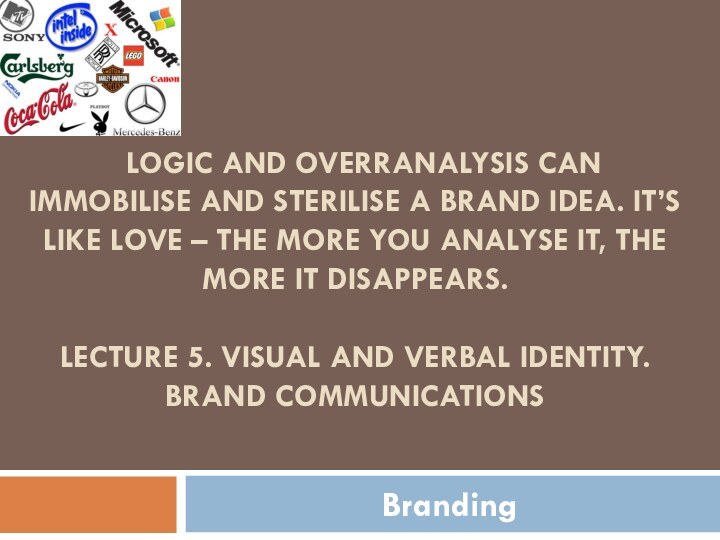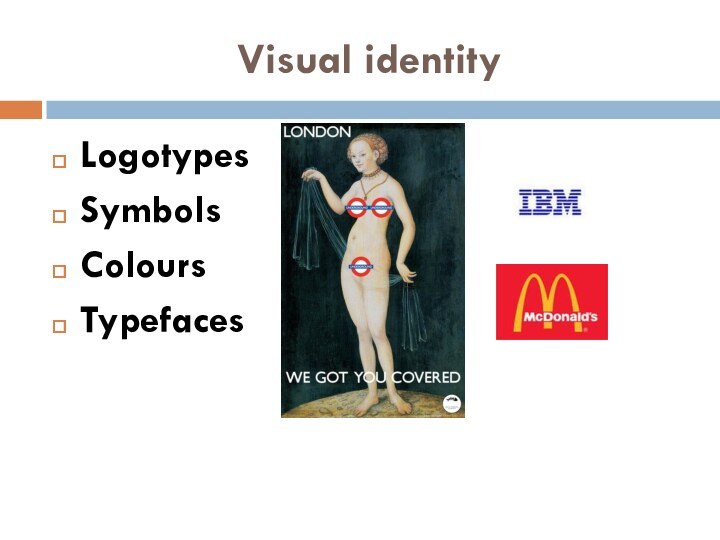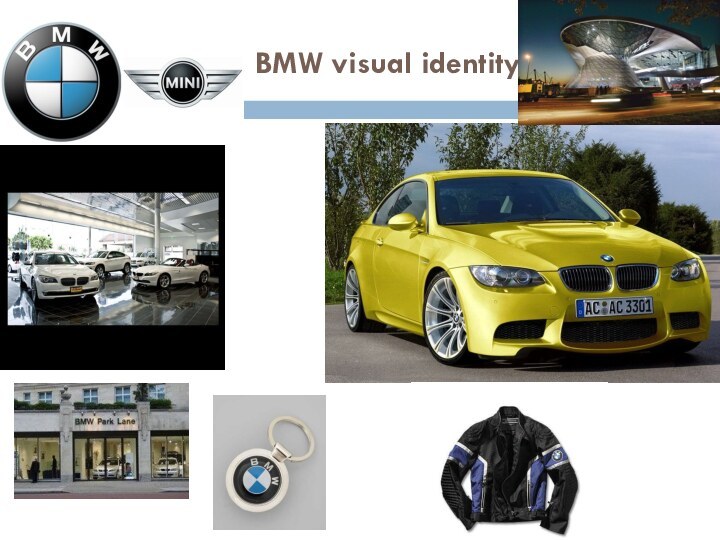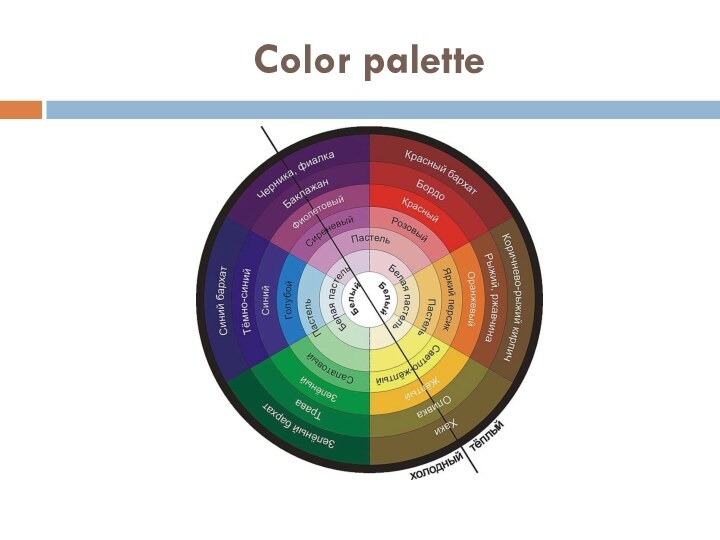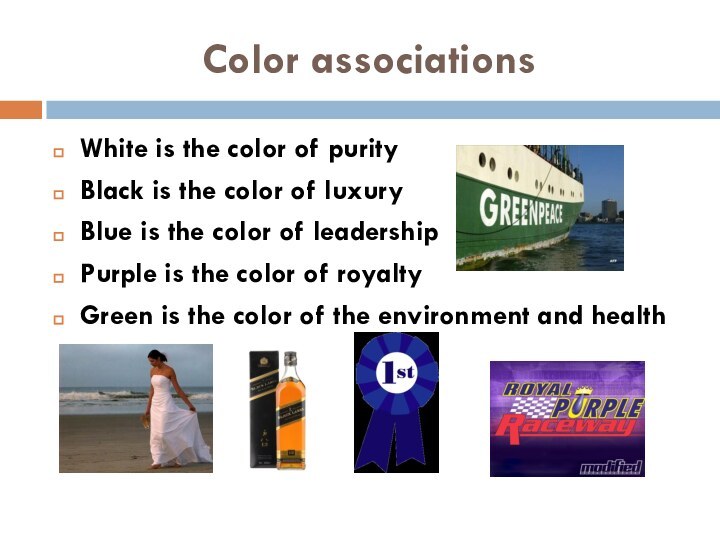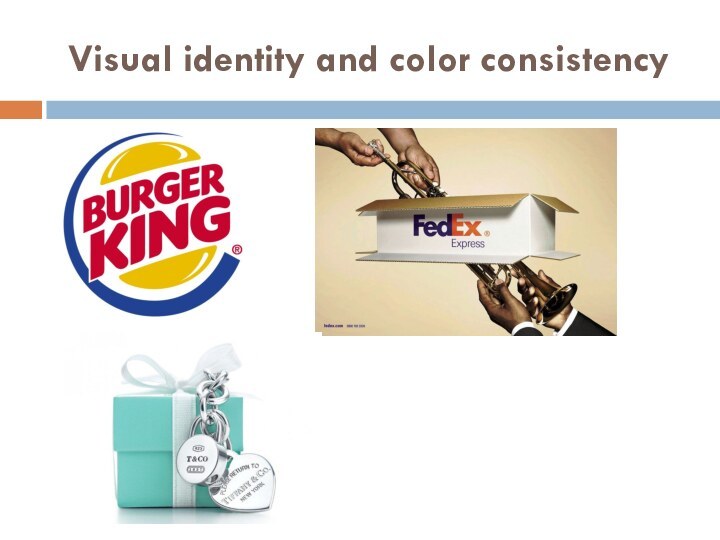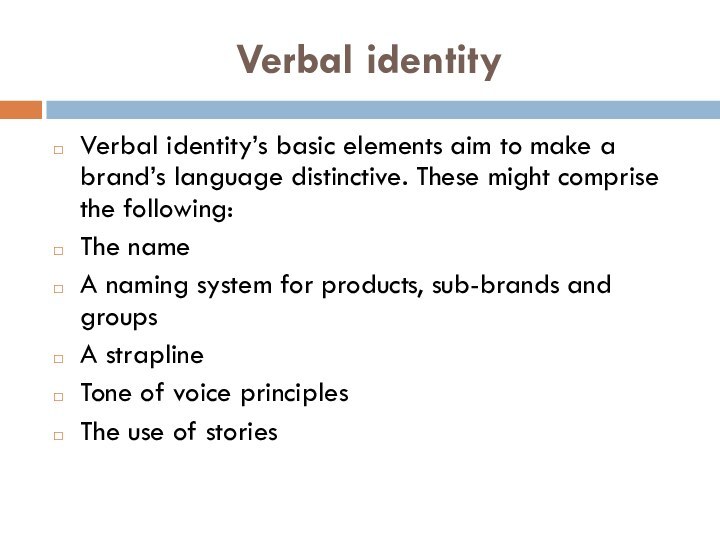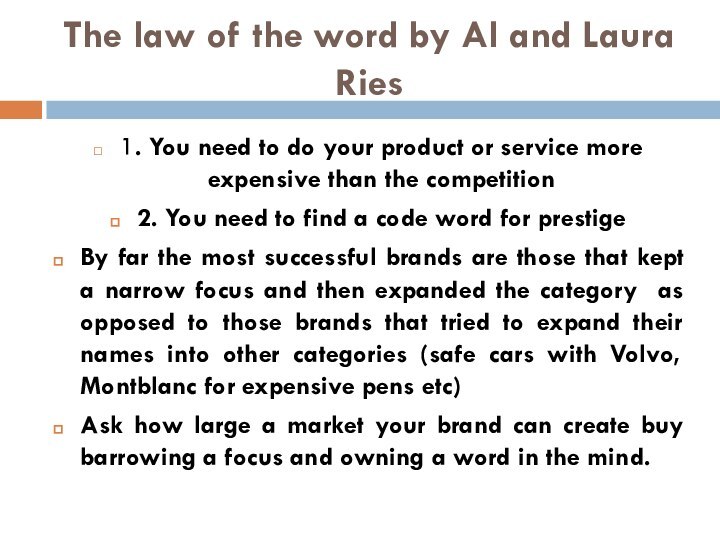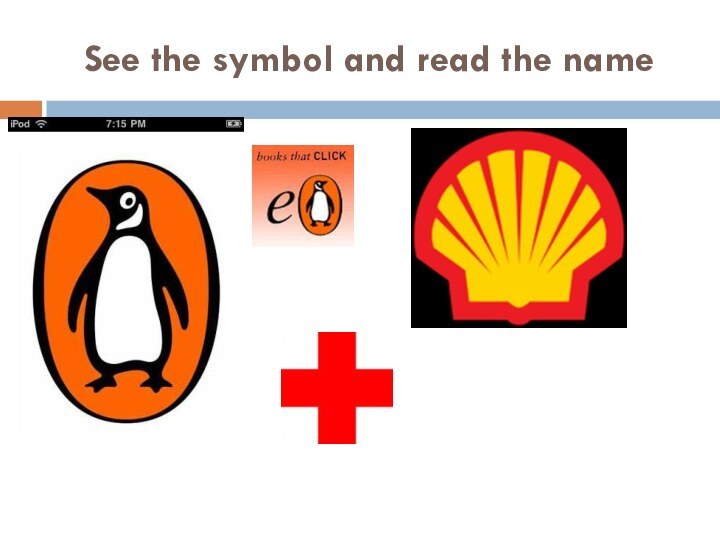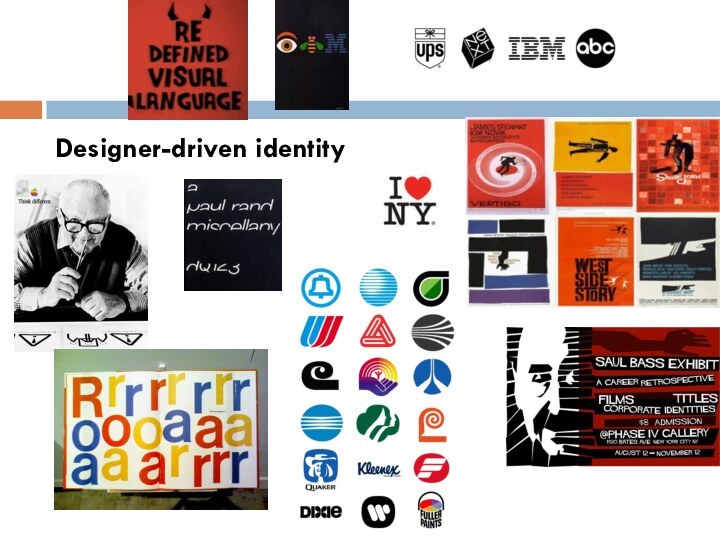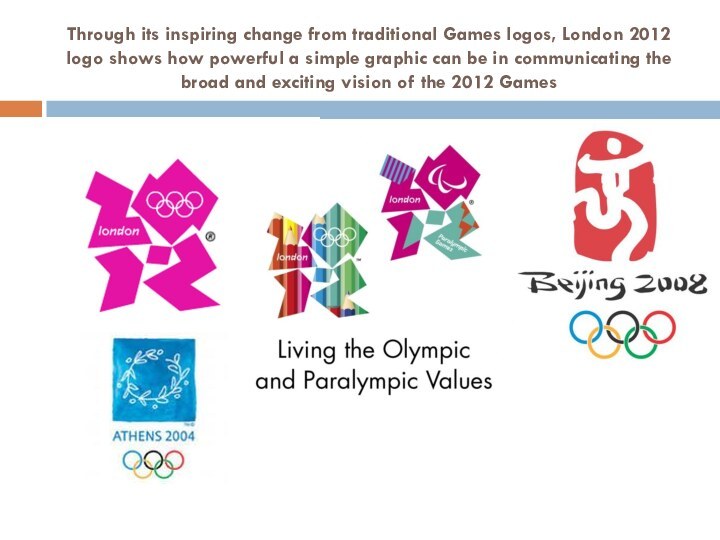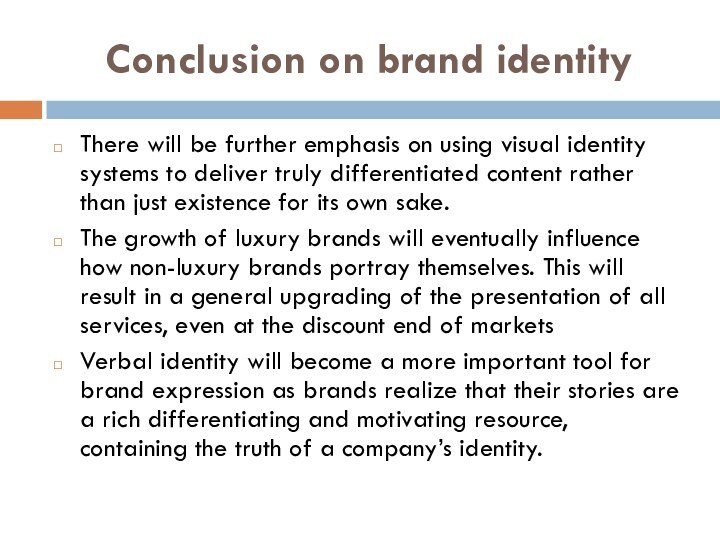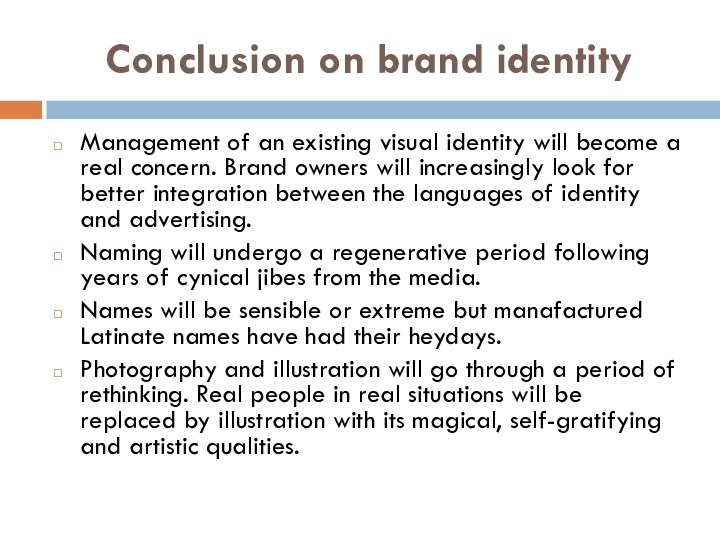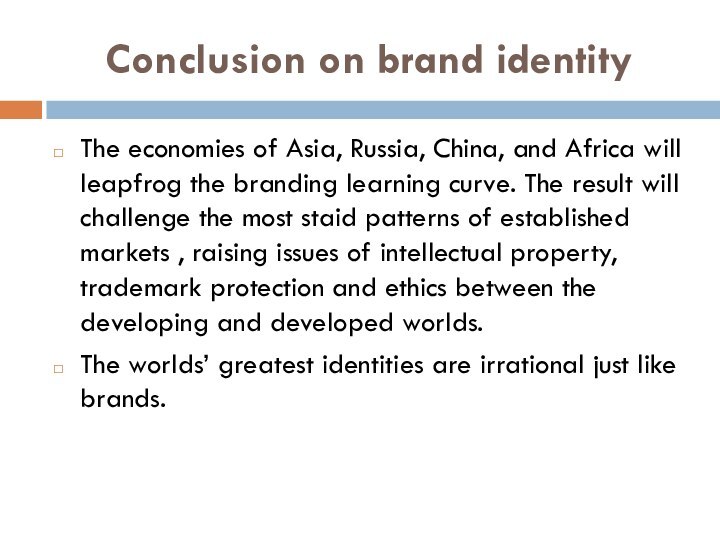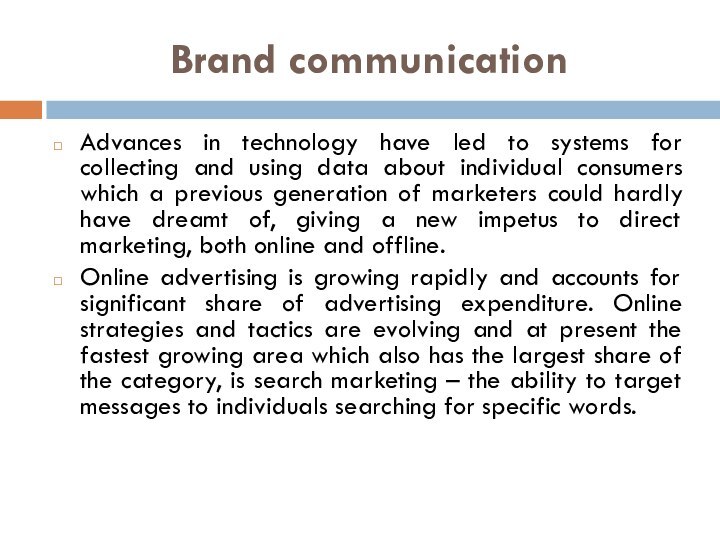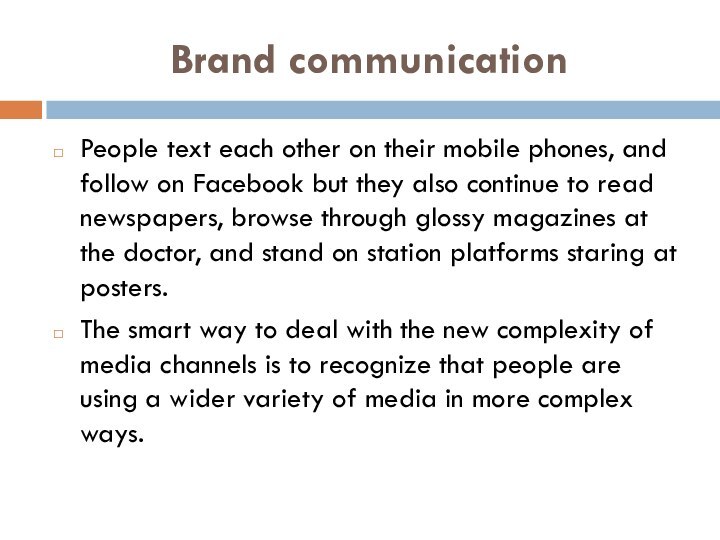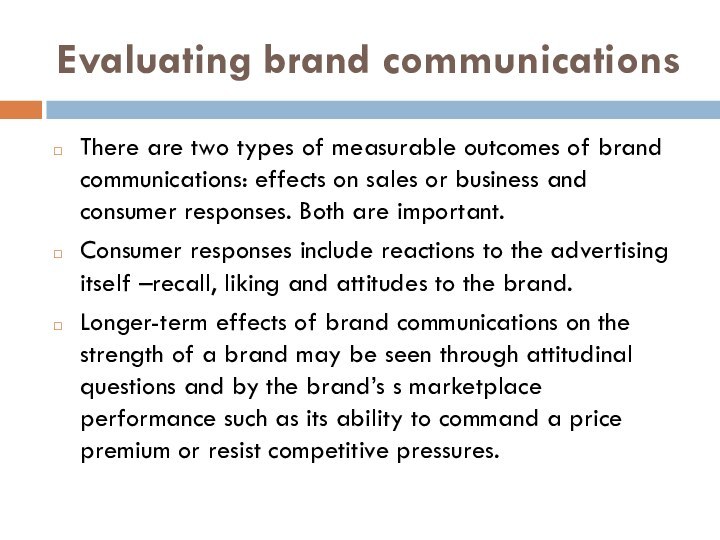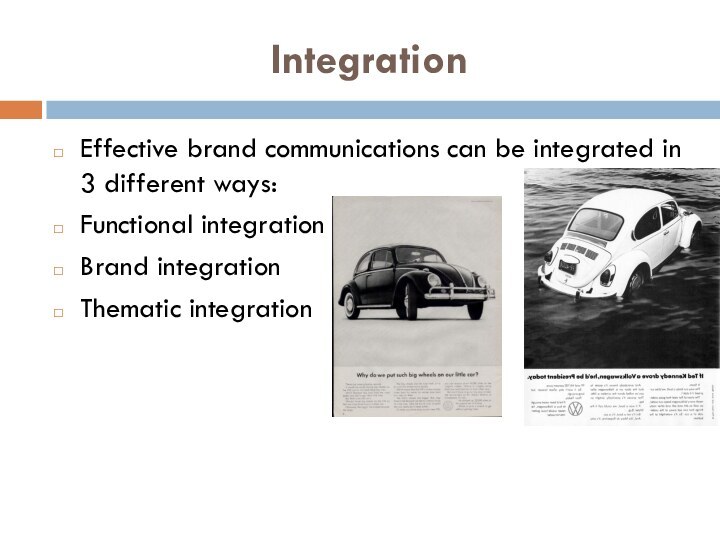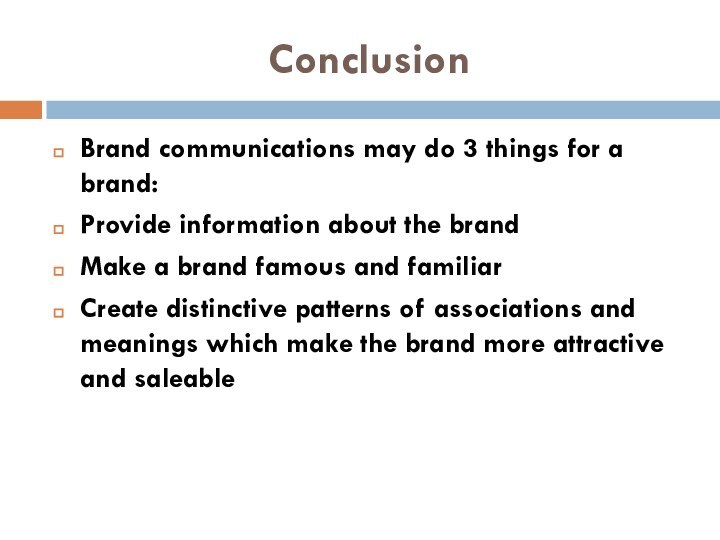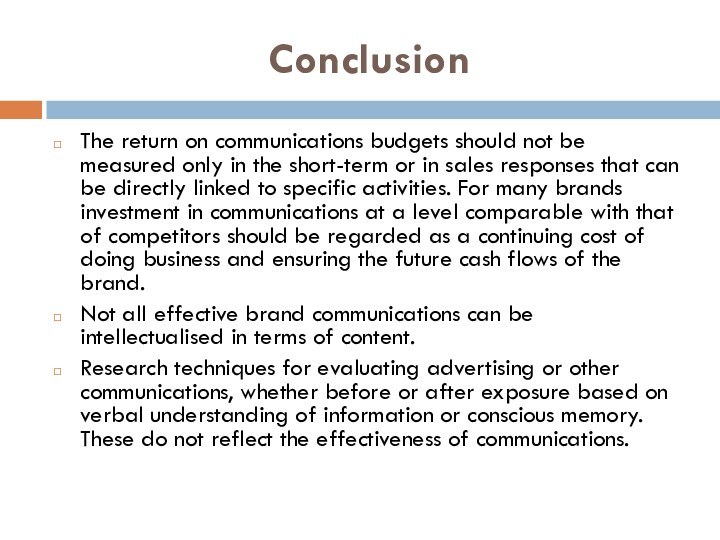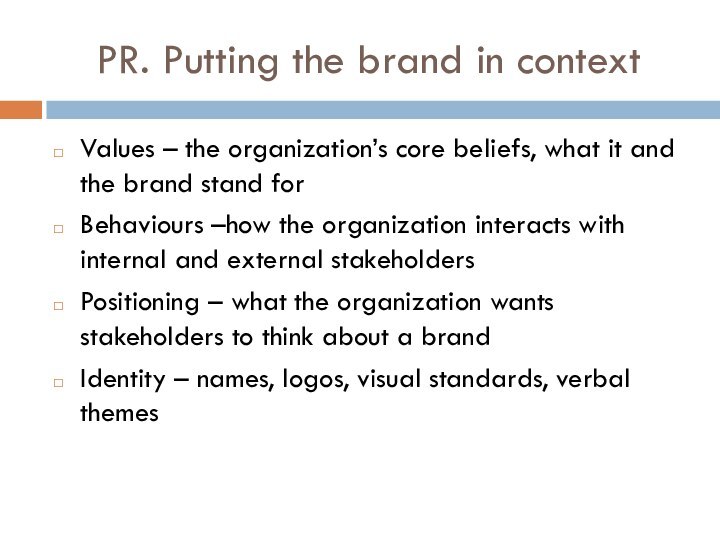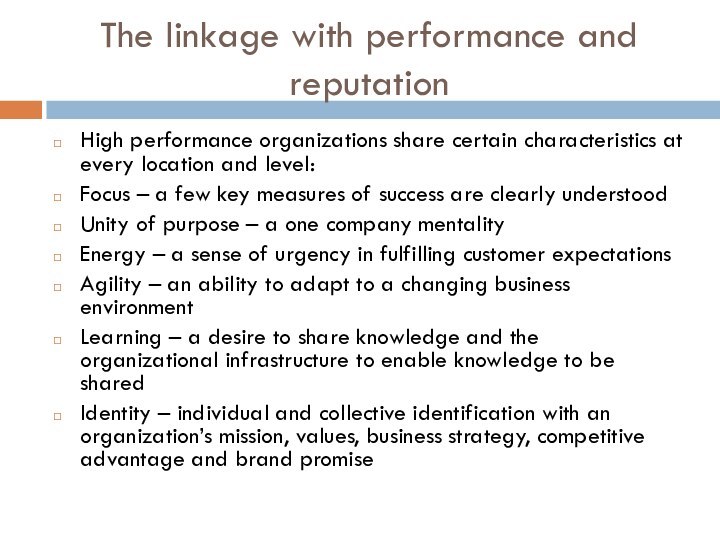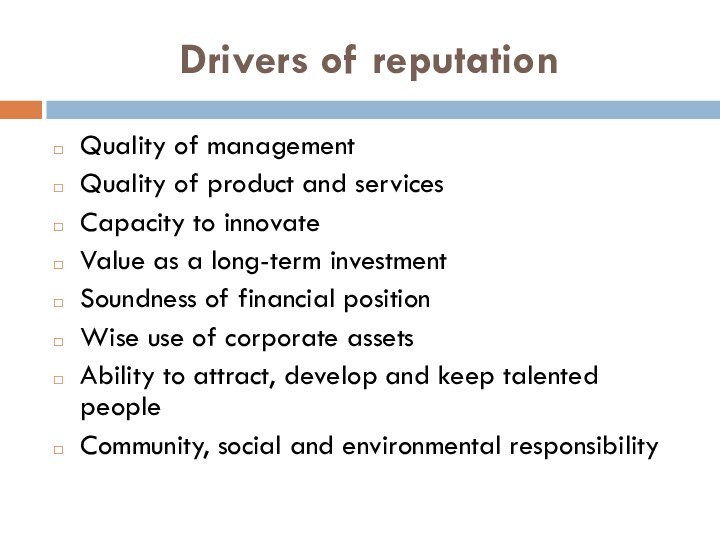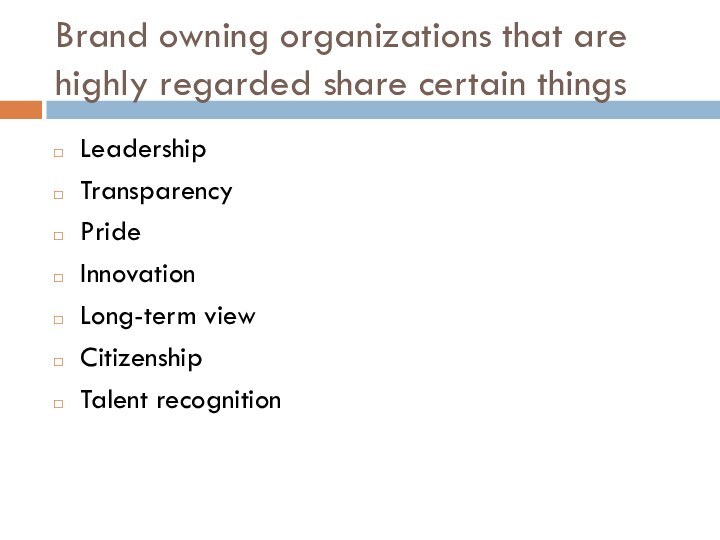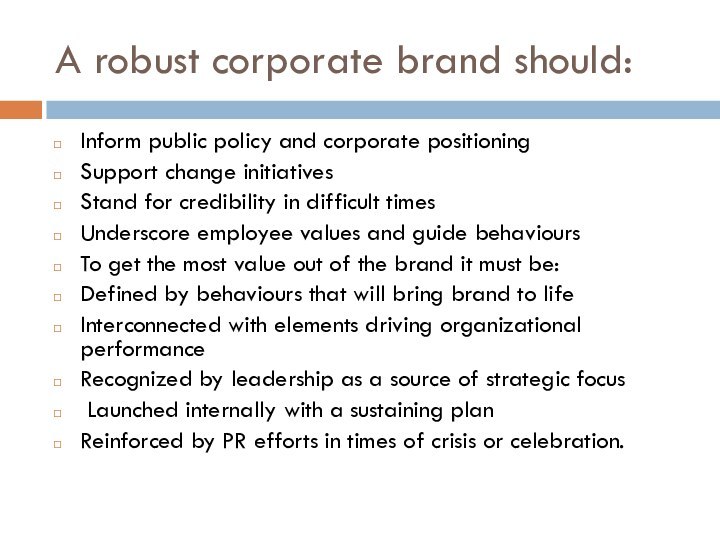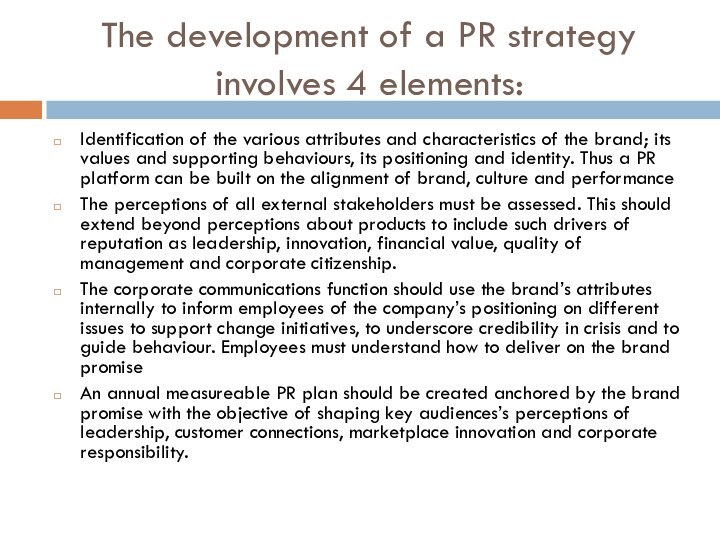Слайд 2
Visual identity
Logotypes
Symbols
Colours
Typefaces
Слайд 3
Bnnnnnnnn BMW visual identity
Слайд 5
Color associations
White is the color of purity
Black is
the color of luxury
Blue is the color of leadership
Purple
is the color of royalty
Green is the color of the environment and health
Слайд 6
Visual identity and color consistency
Слайд 7
Verbal identity
Verbal identity’s basic elements aim to make
a brand’s language distinctive. These might comprise the following:
The
name
A naming system for products, sub-brands and groups
A strapline
Tone of voice principles
The use of stories
Слайд 8
The law of the word by Al and
Laura Ries
1. You need to do your product or
service more expensive than the competition
2. You need to find a code word for prestige
By far the most successful brands are those that kept a narrow focus and then expanded the category as opposed to those brands that tried to expand their names into other categories (safe cars with Volvo, Montblanc for expensive pens etc)
Ask how large a market your brand can create buy barrowing a focus and owning a word in the mind.
Слайд 9
See the symbol and read the name
Слайд 11
Through its inspiring change from traditional Games logos,
London 2012 logo shows how powerful a simple graphic
can be in communicating the broad and exciting vision of the 2012 Games
Слайд 12
Conclusion on brand identity
There will be further emphasis
on using visual identity systems to deliver truly differentiated
content rather than just existence for its own sake.
The growth of luxury brands will eventually influence how non-luxury brands portray themselves. This will result in a general upgrading of the presentation of all services, even at the discount end of markets
Verbal identity will become a more important tool for brand expression as brands realize that their stories are a rich differentiating and motivating resource, containing the truth of a company’s identity.
Слайд 13
Conclusion on brand identity
Management of an existing visual
identity will become a real concern. Brand owners will
increasingly look for better integration between the languages of identity and advertising.
Naming will undergo a regenerative period following years of cynical jibes from the media.
Names will be sensible or extreme but manafactured Latinate names have had their heydays.
Photography and illustration will go through a period of rethinking. Real people in real situations will be replaced by illustration with its magical, self-gratifying and artistic qualities.
Слайд 14
Conclusion on brand identity
The economies of Asia, Russia,
China, and Africa will leapfrog the branding learning curve.
The result will challenge the most staid patterns of established markets , raising issues of intellectual property, trademark protection and ethics between the developing and developed worlds.
The worlds’ greatest identities are irrational just like brands.
Слайд 15
Brand communication
Advances in technology have led to systems
for collecting and using data about individual consumers which
a previous generation of marketers could hardly have dreamt of, giving a new impetus to direct marketing, both online and offline.
Online advertising is growing rapidly and accounts for significant share of advertising expenditure. Online strategies and tactics are evolving and at present the fastest growing area which also has the largest share of the category, is search marketing – the ability to target messages to individuals searching for specific words.
Слайд 16
Brand communication
People text each other on their mobile
phones, and follow on Facebook but they also continue
to read newspapers, browse through glossy magazines at the doctor, and stand on station platforms staring at posters.
The smart way to deal with the new complexity of media channels is to recognize that people are using a wider variety of media in more complex ways.
Слайд 17
Evaluating brand communications
There are two types of measurable
outcomes of brand communications: effects on sales or business
and consumer responses. Both are important.
Consumer responses include reactions to the advertising itself –recall, liking and attitudes to the brand.
Longer-term effects of brand communications on the strength of a brand may be seen through attitudinal questions and by the brand’s s marketplace performance such as its ability to command a price premium or resist competitive pressures.
Слайд 18
Integration
Effective brand communications can be integrated in 3
different ways:
Functional integration
Brand integration
Thematic integration
Слайд 19
Conclusion
Brand communications may do 3 things for a
brand:
Provide information about the brand
Make a brand famous
and familiar
Create distinctive patterns of associations and meanings which make the brand more attractive and saleable
Слайд 20
Conclusion
The return on communications budgets should not be
measured only in the short-term or in sales responses
that can be directly linked to specific activities. For many brands investment in communications at a level comparable with that of competitors should be regarded as a continuing cost of doing business and ensuring the future cash flows of the brand.
Not all effective brand communications can be intellectualised in terms of content.
Research techniques for evaluating advertising or other communications, whether before or after exposure based on verbal understanding of information or conscious memory. These do not reflect the effectiveness of communications.
Слайд 21
PR. Putting the brand in context
Values – the
organization’s core beliefs, what it and the brand stand
for
Behaviours –how the organization interacts with internal and external stakeholders
Positioning – what the organization wants stakeholders to think about a brand
Identity – names, logos, visual standards, verbal themes
Слайд 22
The linkage with performance and reputation
High performance organizations
share certain characteristics at every location and level:
Focus –
a few key measures of success are clearly understood
Unity of purpose – a one company mentality
Energy – a sense of urgency in fulfilling customer expectations
Agility – an ability to adapt to a changing business environment
Learning – a desire to share knowledge and the organizational infrastructure to enable knowledge to be shared
Identity – individual and collective identification with an organization’s mission, values, business strategy, competitive advantage and brand promise
Слайд 23
Drivers of reputation
Quality of management
Quality of product and
services
Capacity to innovate
Value as a long-term investment
Soundness of financial
position
Wise use of corporate assets
Ability to attract, develop and keep talented people
Community, social and environmental responsibility
Слайд 24
Brand owning organizations that are highly regarded share
certain things
Leadership
Transparency
Pride
Innovation
Long-term view
Citizenship
Talent recognition
Слайд 25
A robust corporate brand should:
Inform public policy and
corporate positioning
Support change initiatives
Stand for credibility in difficult
times
Underscore employee values and guide behaviours
To get the most value out of the brand it must be:
Defined by behaviours that will bring brand to life
Interconnected with elements driving organizational performance
Recognized by leadership as a source of strategic focus
Launched internally with a sustaining plan
Reinforced by PR efforts in times of crisis or celebration.
